The aroma of Daing na Bangus frying in the kitchen instantly takes me back to my childhood in the province, where my Lola would butterfly fresh bangus (milkfish) from the market every weekend. She'd marinate them in her special mixture of sukang Iloko, crushed garlic, and her "secret" ratio of paminta - though she'd always let me help pound the peppercorns in her old aluminum mortar and pestle.
Those bangus would spend sunny afternoons drying on bamboo baskets in our backyard, carefully covered with old mosquito nets to keep the flies away. The neighborhood kids always knew - if you spotted bangus drying in Lola Uma's backyard, tomorrow's breakfast would be extra special.
Now in my own kitchen, every time I make this crispy, garlicky daing na bangus using her exact recipe, that first bite with sinangag and runny itlog brings me right back to her wooden dining table, where she'd always save the crispiest belly part just for me.
This recipe is more than just breakfast, it's my Lola's love, sealed in every perfectly marinated, golden-brown piece.
Jump to:
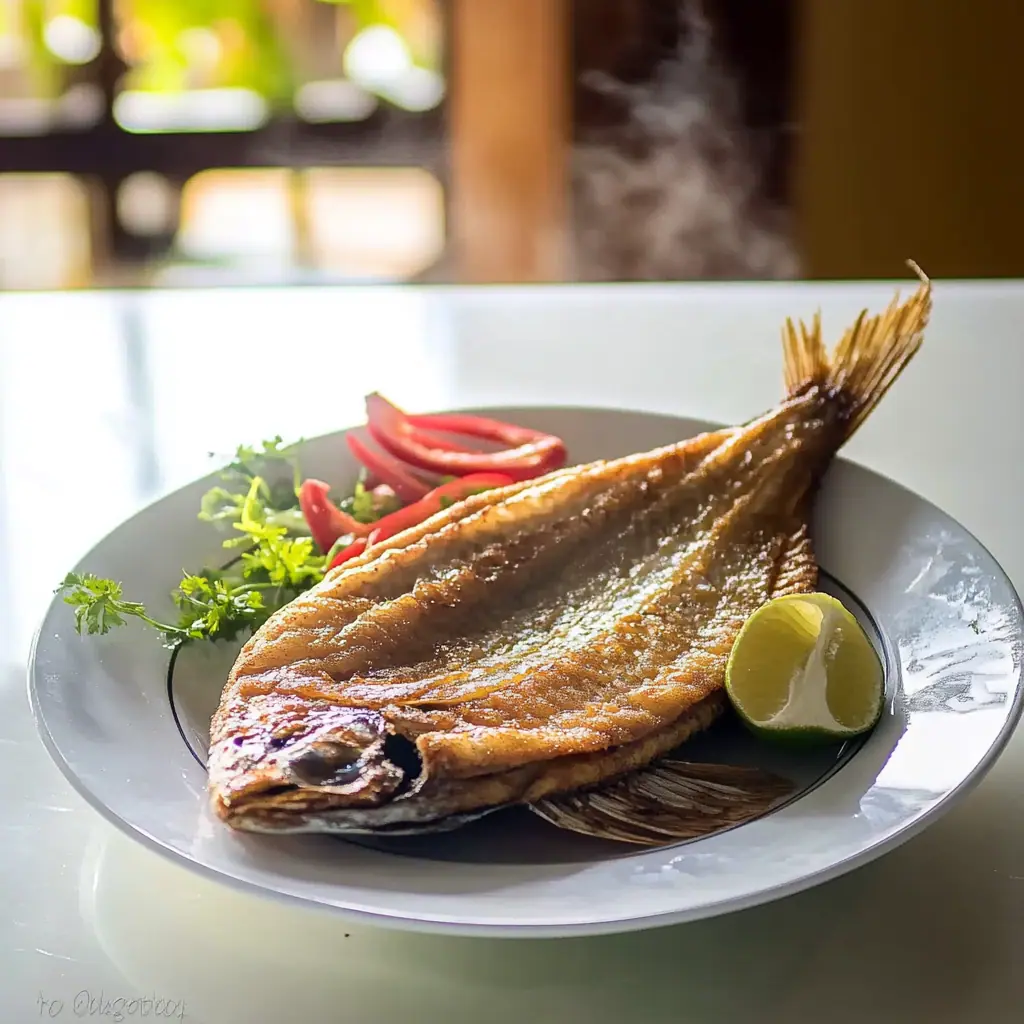
Why You'll Love This Recipe
- Perfect Crispiness: Achieve that signature golden-brown, crispy exterior while maintaining moist, flavorful flesh inside
- Make-Ahead Friendly: Prep overnight for an easier morning cooking experience
- Restaurant Quality: Create the same crispy-tangy finish you love from your favorite carinderia
- Balanced Flavors: The perfect harmony of garlic, vinegar, and pepper that makes this a breakfast favorite
- Complete Guide: Including Lola's secret tips and troubleshooting guide for foolproof results
Ingredients
Our traditional daing na bangus recipe relies on a careful balance of sour, savory, and aromatic elements. The milkfish itself offers a mild, versatile canvas, while Filipino vinegar provides the characteristic tang that tenderizes and preserves. Garlic and peppercorns bring complex, aromatic depth that penetrates deep into the flesh during marination, transforming this humble fish into a flavorful masterpiece.
These ingredients work together to create the perfect balance of flavors while the marination process ensures the fish stays moist inside while developing a crispy exterior when fried.
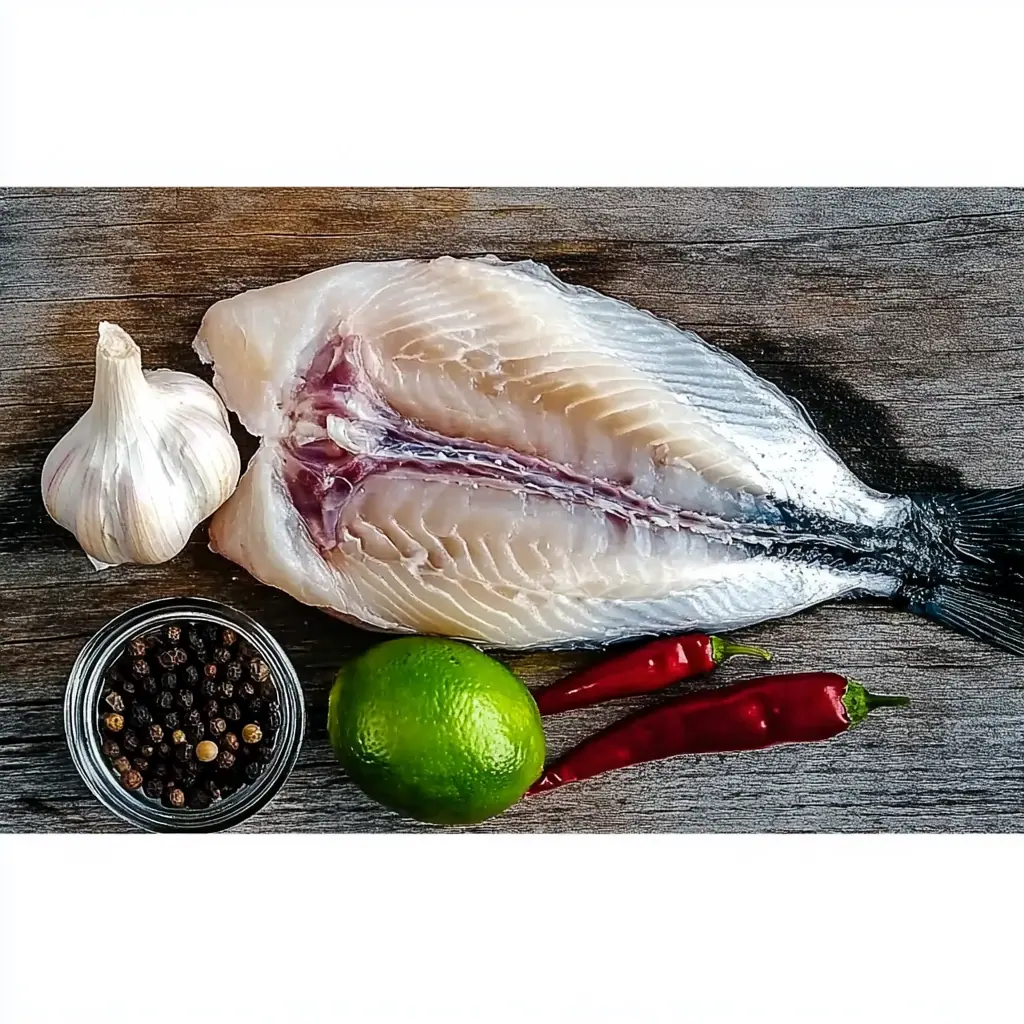
- 4 whole bangus (milkfish), medium-sized, butterflied and deboned
- 1 cup vinegar (preferably Filipino cane or coconut vinegar)
- 5 cloves garlic, crushed
- 1 teaspoon whole black peppercorns, cracked
- 1 teaspoon salt
- Cooking oil for frying
- Optional: 2-3 pieces Thai chilies
Equipment
- Sharp filleting knife: Essential for properly butterflying the fish and removing bones without tearing the flesh
- Large shallow dish: Used for marinating the fish, ensuring even coverage of the vinegar mixture
- Large frying pan or skillet: Provides adequate space to fry the fish flat without crowding
- Kitchen tongs: Helps safely flip the fish without breaking it
- Paper towels: Used to thoroughly dry the fish before frying for maximum crispiness
- Cutting board: Provides a stable surface for preparing the fish
- Thermometer (optional): Ensures precise oil temperature for perfect frying results
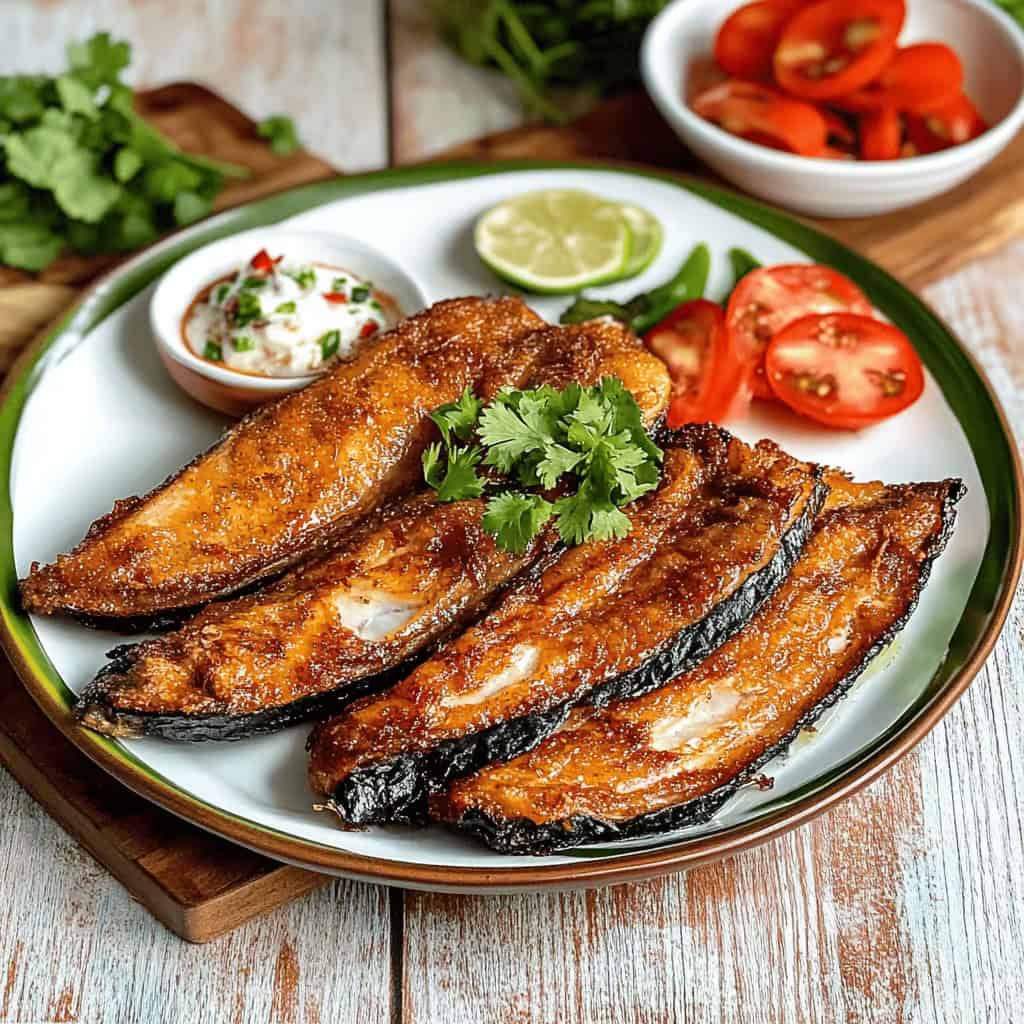
How To Make
- Start your preparation by scaling the bangus if you prefer to remove the scales. Take your sharp knife and make a careful butterfly cut along the belly of the fish, opening it flat like a book. Remove all the internal organs and rinse the fish thoroughly under cold running water.
- Next, locate the backbone of your butterflied bangus. Starting from the head, gently pull the backbone toward the tail to remove it completely. Use tweezers to carefully remove any remaining small bones. Once deboned, rinse the fish again and pat it completely dry using paper towels.
- In a large non-metal bowl, prepare your marinade by combining one cup of Filipino vinegar, five crushed cloves of garlic, one teaspoon of cracked black peppercorns, and one teaspoon of salt. If you enjoy spicy food, you may add crushed Thai chilies. Mix these ingredients well until the salt dissolves completely.
- Place your prepared bangus in a shallow container and pour the marinade over it, making sure the fish is completely covered by the solution. Cover the container and place it in your refrigerator set at 4°C/39°F. Let the fish marinate for at least 8 hours or overnight, but do not exceed 12 hours as this can make the fish too soft.
- When you're ready to cook, remove the marinated fish from the refrigerator. Take the bangus out of the marinade and pat it very dry with paper towels. This step is crucial for achieving crispy skin.
- Heat your frying pan and add enough cooking oil to cover half the thickness of the fish. The oil must reach exactly 180°C/350°F before frying. If you don't have a thermometer, test the oil by inserting a wooden chopstick - the oil should bubble steadily around it but not too vigorously.
- Carefully place your bangus in the hot oil. Let it fry undisturbed for 3-5 minutes until the bottom side turns golden brown. Using tongs, carefully flip the fish only once and cook the other side for another 3-5 minutes. The internal temperature should reach 63°C/145°F for food safety.
- Once cooked, lift the fish from the oil using your tongs and let it drain on paper towels to remove excess oil. The skin should be crispy and golden brown, while the flesh inside remains moist and flaky.
- Serve your daing na bangus immediately while hot with garlic rice, fried egg, and a side of tomato and onion salad. Prepare a dipping sauce by combining vinegar with crushed garlic, cracked black pepper, and chili peppers if desired.

Tips from Lola's Kitchen
- Fish Selection: Choose fresh bangus with clear eyes and firm flesh. The fresher the fish, the better your daing will taste.
- Scale or No Scale? Keeping the scales on helps prevent the fish from falling apart during frying, but removing them creates a crispier skin. Choose based on your preference.
- Perfect Marination: Don't exceed 12 hours of marination - the acid will start breaking down the proteins and make the fish mushy.
- Oil Temperature: Maintaining the right oil temperature is crucial. Too hot, and the outside burns before the inside cooks; too cool, and the fish becomes greasy.
- Bone Check: Run your fingers gently over the flesh after deboning to feel for any remaining bones - they're easier to detect by touch than sight.
- Drying Process: After marinating, pat the fish extremely dry with paper towels. Any excess moisture will prevent proper crisping and cause dangerous oil splatter.
- Gentle Handling: Use proper tongs to carefully flip the fish only once during cooking to maintain its structure.
Substitutions
- Vinegar: Apple cider vinegar (for a milder taste) or white vinegar can work if Filipino vinegar isn't available.
- Milkfish: In regions where bangus is hard to find, sea bass or pompano make good alternatives as they have similar flesh texture.
- Garlic: If fresh garlic is unavailable, garlic powder can work (1 teaspoon equals about 4 fresh cloves), though the flavor won't be as pronounced.
- Peppercorns: Ground black pepper can substitute for whole peppercorns, but reduce the amount by half to prevent overpowering the dish.
- Thai Chilies: Red pepper flakes or a dash of hot sauce can provide heat if Thai chilies aren't available.
Troubleshooting
- Fish Breaking Apart:
- Keep scales on and handle the fish gently during preparation
- Ensure fish is properly dried before frying
- Don't flip more than once during cooking
- Consider marinating for less time if the flesh seems too soft
- Too Salty:
- Reduce marination time for future batches
- Rinse the fish briefly before patting dry
- Adjust salt quantity in marinade
- Serve with plain rice to balance saltiness
- Not Crispy Enough:
- Ensure oil is hot enough before adding fish
- Pat fish very dry before frying
- Don't overcrowd the pan
- Use enough oil to cover half the thickness of the fish
- Too Sour:
- Reduce marination time
- Dilute vinegar with water (3:1 ratio)
- Balance with a slightly sweet dipping sauce
Storage & Reheating
- Refrigeration:
- Cooked daing na bangus will keep for up to 3 days in an airtight container
- Uncooked marinated fish should not be stored longer than 24 hours
- Freezing:
- Marinated uncooked bangus can be frozen for up to 3 months
- Wrap individual pieces in plastic wrap, then foil to prevent freezer burn
- Thaw completely in refrigerator before cooking
- Reheating:
- Air fryer: 3-4 minutes at 180°C for best results
- Pan: Use low heat with minimal oil to restore crispness
- Avoid microwave reheating as it makes the fish rubbery and soggy
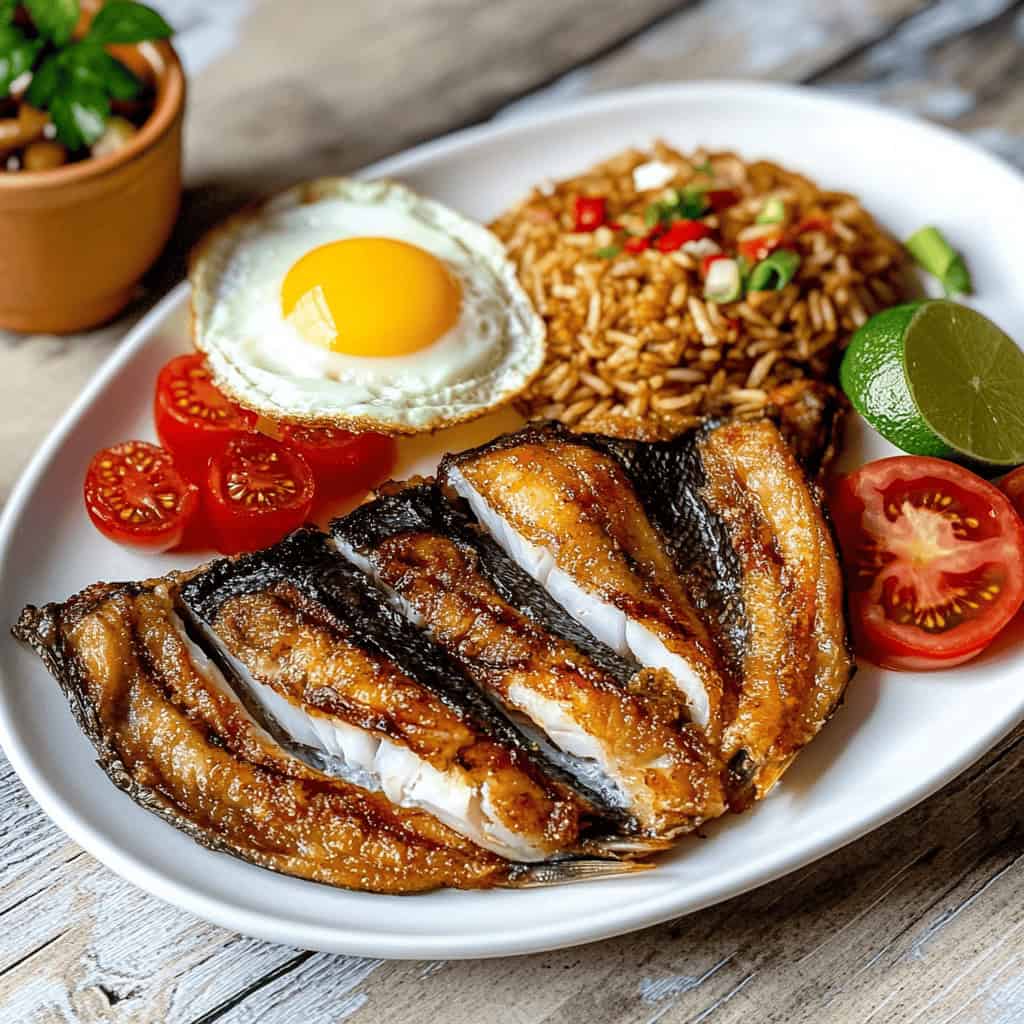
FAQ
Why is my fish too sour?
Reduce marination time or dilute vinegar with water (3:1 ratio) for a milder flavor.
Can I use frozen bangus?
Yes, thaw completely in the refrigerator and pat thoroughly dry before marinating.
How do I reduce splatter when frying?
Ensure fish is very dry before frying, use a splatter screen, and maintain proper oil temperature.
Can I air fry this dish?
Yes, brush the fish with oil and air fry at 180°C for 12-15 minutes, flipping halfway through.
How do I know when the fish is cooked through?
The flesh should be opaque and flake easily with a fork. For food safety, the internal temperature should reach 63°C/145°F.
Can I marinate multiple fish at once?
Yes, but make sure they're in a single layer and fully covered with marinade.
What's the best oil for frying bangus?
Neutral oils with high smoke points like canola, vegetable, or peanut oil work best.
Can I reuse the marinade?
For food safety reasons, never reuse marinade that has contained raw fish.
Related
Looking for other recipes like this? Try these:
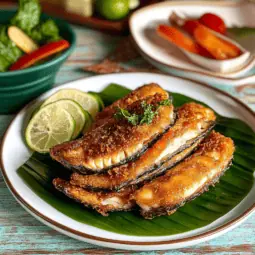
Authentic Daing na Bangus (Filipino Marinated Milkfish)
Equipment
- Sharp filleting knife (Matulis na kutsilyo)
- Large shallow dish for marinating mangkok or kaldero
- Large frying pan or skillet (Kawali)
- Kitchen tongs (Sipit)
- Paper towels
- Cutting board (Sangkalan)
Ingredients
- 4 whole bangus milkfish/bangus, medium-sized, butterflied and deboned
- 1 cup vinegar suka - preferably Filipino cane or coconut vinegar
- 5 cloves garlic bawang, crushed
- 1 teaspoon whole black peppercorns pamintang buo, cracked
- 1 teaspoon salt asin
- Cooking oil for frying
- Optional: 2-3 pieces Thai chilies siling labuyo
Instructions
- Start your preparation by scaling the bangus (kaliskisan ang bangus) if you prefer to remove the scales. Take your sharp knife (kutsilyo) and make a careful butterfly cut along the belly of the fish, opening it flat like a book. Remove all the internal organs (tanggalin ang mga lamang-loob) and rinse the fish thoroughly under cold running water.
- Next, locate the backbone of your butterflied bangus. Starting from the head, gently pull the backbone toward the tail to remove it completely. Use tweezers to carefully remove any remaining small bones (mga maliliit na tinik). Once deboned, rinse the fish again and pat it completely dry using paper towels (tuyuin ng mabuti gamit ang paper towel).
- In a large non-metal bowl, prepare your marinade by combining one cup of Filipino vinegar, five crushed cloves of garlic (dinurog na bawang), one teaspoon of cracked black peppercorns (dinurog na paminta), and one teaspoon of salt (asin). If you enjoy spicy food, you may add crushed Thai chilies (dinurog na siling labuyo). Mix these ingredients well until the salt dissolves completely.
- Place your prepared bangus in a shallow container (lalagyan) and pour the marinade over it, making sure the fish is completely covered by the solution (siguruhing nalulubog ang isda sa marinade). Cover the container and place it in your refrigerator set at 4°C/39°F. Let the fish marinate for at least 8 hours or overnight, but do not exceed 12 hours as this can make the fish too soft (malambot).
- When you're ready to cook, remove the marinated fish from the refrigerator. Take the bangus out of the marinade and pat it very dry with paper towels (tuyuin ng mabuti). This step is crucial for achieving crispy skin (magkaroon ng malutong na balat).
- Heat your frying pan (initin ang kawali) and add enough cooking oil to cover half the thickness of the fish. The oil must reach exactly 180°C/350°F before frying. If you don't have a thermometer, test the oil by inserting a wooden chopstick - the oil should bubble steadily around it but not too vigorously.
- Carefully place your bangus in the hot oil (maingat na ilagay ang bangus sa mainit na mantika). Let it fry undisturbed for 3-5 minutes until the bottom side turns golden brown. Using tongs (sipit), carefully flip the fish only once and cook the other side for another 3-5 minutes. The internal temperature should reach 63°C/145°F for food safety.
- Once cooked, lift the fish from the oil using your tongs and let it drain on paper towels (patuyuin sa paper towel) to remove excess oil. The skin should be crispy and golden brown, while the flesh inside remains moist and flaky.
- Serve your daing na bangus immediately while hot (ihain habang mainit pa) with garlic rice (sinangag), fried egg (pritong itlog), and a side of tomato and onion salad (ensaladang kamatis at sibuyas). Prepare a dipping sauce (sawsawan) by combining vinegar with crushed garlic, cracked black pepper, and chili peppers if desired.
- If you have leftover cooked daing na bangus, let it cool completely before storing in an airtight container in the refrigerator. It will keep well for up to three days. When reheating, warm it in a pan over low heat (mahinang apoy) with a small amount of oil, or in an air fryer at 180°C for 3-4 minutes. Avoid using the microwave as this will make the fish rubbery (makunat).
Tips from Lola's Kitchen
- Scale or No Scale? Keeping the scales on helps prevent the fish from falling apart during frying, but removing them creates a crispier skin. Choose based on your preference and comfort level with handling fish.
- Perfect Marination: Don't exceed 12 hours of marination - the acid will start breaking down the proteins and make the fish mushy.
- Oil Temperature: Maintaining the right oil temperature is crucial. Too hot, and the outside burns before the inside cooks; too cool, and the fish becomes greasy.
- Bone Check: Run your fingers gently over the flesh after deboning to feel for any remaining bones - they're easier to detect by touch than sight.
Nutrition
The Story Behind Daing na Bangus (Filipino Marinated Milkfish)
In the coastal towns of the Philippines, where bangus (milkfish) farms dot the landscape of provinces like Pangasinan, Bulacan, and Capiz, Daing na Bangus emerged as a practical solution for preserving the day's catch. This butterfly-cut marinated milkfish has evolved from a preservation technique into what is now considered the "aristocrat of Filipino dried fish," gracing breakfast tables from humble provincial homes to modern urban apartments.
The term "daing" refers to the traditional Filipino method of preserving fish through splitting, marinating, and sun-drying. While most daing preparations fully dry the fish, Daing na Bangus uniquely maintains its moistness through a shorter marination process, creating that perfect balance between preserved and fresh fish. This adaptation has made it a favorite among those who love dried fish but prefer a more delicate, less intensely salted flavor.
What sets Daing na Bangus apart is its preparation method, which began in the salt-making regions of Central Luzon. Here, fish vendors would butterfly the bangus - a technique called "pag-daing" - then soak it in native palm vinegar (sukang Iloko) with crushed garlic and peppercorns. This method not only preserved the fish but enhanced its natural flavors, making it the centerpiece of the iconic Filipino breakfast combination known as "bangsilog" (bangus, sinangag, at itlog).
Today, while modern refrigeration has made preservation less necessary, the distinct tangy-garlicky flavor profile of Daing na Bangus has kept it a cherished dish. From seaside carinderias serving freshly caught bangus to city restaurants offering gourmet interpretations, this dish represents the ingenious way Filipinos transform simple ingredients into extraordinary meals. Whether enjoyed with spiced vinegar alongside garlic rice and eggs, or reinvented in contemporary fusion dishes, Daing na Bangus remains a testament to the enduring appeal of traditional Filipino cooking methods.
The popularity of this dish has even influenced bangus farming practices, with many fishponds specifically raising milkfish to the perfect size for daing preparation. This interconnection between culinary traditions and local agriculture showcases how deeply embedded Daing na Bangus is in Filipino food culture, making it not just a recipe, but a vital part of the Philippines' culinary heritage.
Remember: Perfect daing na bangus isn't just about the marinade—it's about achieving that ideal crispiness on the outside while keeping the flesh moist inside, best enjoyed with a dipping sauce of spiced vinegar and the essential side of garlic rice.
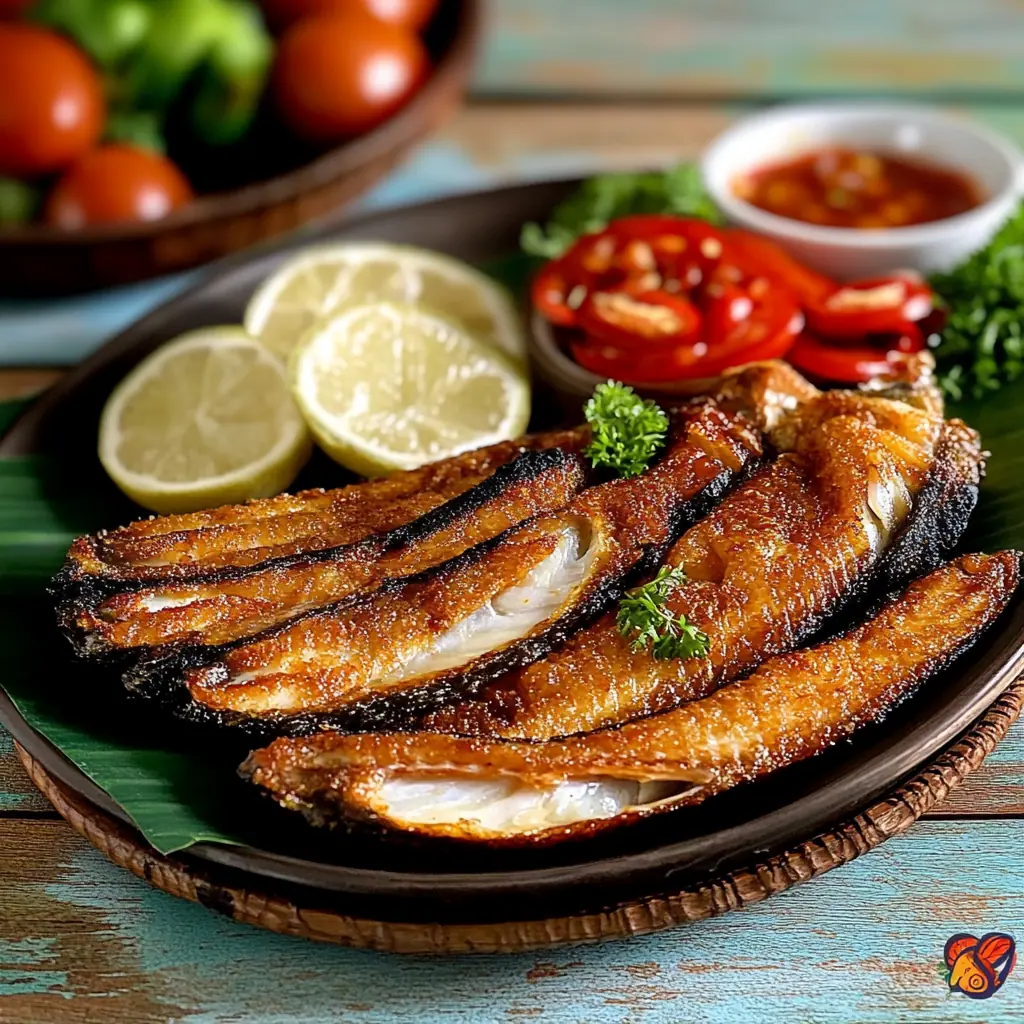









Informacje RSS says
Where can I buy ready to cook???